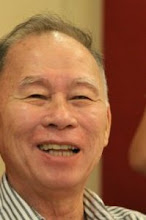Acknowledging excerpts from Boo Chanco’s column on energy:
“How did we get into this situation? Regulatory capture just
about sums it up. Government was just too intimidated to do anything that may be misconstrued as tolerating corruption.
And it isn’t just the power producers who are intimidating
government into inaction. Environmental groups have also caused some big
projects already started to stop, as is the case of that Meralco power plant in
Subic and the Laguna Lake flood control
project.
The Aquino administration knew in 2010 that we don’t have
enough power capacity to allow for reliable supply at reasonable rates. The
Department of Energy knew, or at least they should have known, that unless the
building of new capacity got started by 2011, blackouts are a strong possibility
towards the tail end of their term.
For an administration that kept on talking about the bullish
economic sentiment, thanks to P-Noy daw, they did nothing about power supply.
Shades of Tita Cory!
Now we have new manufacturing locators who want an alternative
to Thailand’s floods and political problems. Should they turn back because we
have no power?
The emergency power given to FVR during his time made it
easy for him to sign negotiated contracts for new power plants through Napocor.
That FVR’s energy boys abused that power to cause us outrageous rates we can’t
shrug off up to now, is another story.
This failure on energy
brings us to the doorstep of the ERAP reign.
Sen. Serge Osmena made an interesting observation with
reference to DAP that can also apply to other things including the mess at
NAIA. This is what Serge said: “He doesn’t have a good feedback mechanism… he
tends to have a cordon sanitaire who are afraid to tell him the truth.”
I guess P-Noy is too busy to worry about pressing problems
that he himself promised to fix. Worse yet, the people around him that he
trusts so much tell him all is well in the Philippines and sadly he believes
them.
Port operations
Last Tuesday, PhilSTAR carried a story about the complaint
of the president of the Aduana Business Club on slow port operations at the
Port of Manila. Some 20 local and international cargo vessels are unable to
dock at the POM because of lack of available berthing spaces. Ships have to
wait in line to dock and unload cargo.
A ship able to get a berthing spot would take a long time to
discharge containers because no space is available, and trucks are still loaded
with empty containers. Sometimes trucks would be carrying these empty container
vans for three days to more than a week, so how can they pick up the loaded
containers out of the port?
Vessel operators are rejecting Philippine-bound cargoes.
They no longer want to make a port call to the Philippines. Some no longer want
to dock at the POM and the MICP… the vessels are avoiding Manila.
A reader who runs an export company in the Bataan export
processing zone confirms the serious problems at POM. “What I can not understand is why in 2013 the
port ran fine and there was no empty container van problem. Was this build up
of empty containers caused by the truck ban? “
And that brings us again to another mess: Metro Manila’s traffic
gridlock.
-o0o-
Looking at all the above headaches for Pnoy, it appears that
his administration has no effective forward planning.
NEDA, which is run by people appointed by the incumbent
president, has the PHILIPPINE DEVELOPMENT PLAN 2011-2016. According to Wikipedia, PDP 2011-2116 is
tasked to do the following:
“It adopts a framework of inclusive growth, which is high
growth that is sustained, generates mass employment, and reduces poverty. With
good governance and anticorruption as the overarching theme of each and every
intervention, the Plan translates into specific goals, objectives, strategies,
programs and projects all the things that we want to accomplish in the medium term.
Through this Plan, we intend to pursue rapid and sustainable
economic growth and development, improve the quality of life of the Filipino,
empower the poor and marginalized and enhance our social cohesion as a nation.
Our strategic development policy framework thus focuses on improving
transparency and accountability in governance, strengthening the macroeconomy,
boosting the competitiveness of our industries, facilitating infrastructure
development, strengthening the financial sector and capital mobilization,
improving access to quality social services, enhancing peace and security for
development, and ensuring ecological integrity.
The Philippine Development Plan will serve as our guide in
formulating policies and implementing development programs for the next six years. It enables us to work
systematically to give the Filipino people a better chance of finally finding
their way out of poverty, inequality, and the poor state of human development.”
Obviously, NEDA’s PDP should straddle more than the incumbent
president’s term to enable government to implement longer range planning. It is
also obvious that GMA’s PDP was not considered in the drawing up of P-Noy’s
PDP.
But that may again lead to charter change, which I dare not
touch.
A WORD TO THE WISE IS SUFFICIENT.



